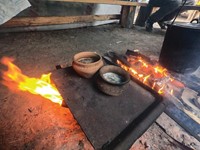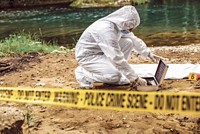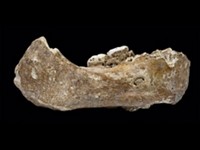Advertisement
Grab your lab coat. Let's get started
Welcome!
Welcome!
Create an account below to get 6 C&EN articles per month, receive newsletters and more - all free.
It seems this is your first time logging in online. Please enter the following information to continue.
As an ACS member you automatically get access to this site. All we need is few more details to create your reading experience.
Not you? Sign in with a different account.
Not you? Sign in with a different account.
ERROR 1
ERROR 1
ERROR 2
ERROR 2
ERROR 2
ERROR 2
ERROR 2
Password and Confirm password must match.
If you have an ACS member number, please enter it here so we can link this account to your membership. (optional)
ERROR 2
ACS values your privacy. By submitting your information, you are gaining access to C&EN and subscribing to our weekly newsletter. We use the information you provide to make your reading experience better, and we will never sell your data to third party members.
Art & Artifacts
Protein analysis pegs species from tiny bone fragments
High-resolution protein fingerprinting also IDs hundreds of bone fragments at once
by Louisa Dalton, special to C&EN
May 16, 2023

Identifying bones at an archaeological dig is a little like sorting shells at the beach. Quite often, the fragments are too small, worn down, or damaged to tell by eye what animal they used to be. Paleontologists regularly employ protein analysis to help identify old bones, yet one common peptide fingerprinting technique requires removing many milligrams of the bone—too much for small or valuable fragments. Analytical chemists have now improved the current method to get better data from only one milligram of bone (Anal. Chem. 2023, DOI:10.1021/acs.analchem.2c03301). They simultaneously streamlined the process so scientists can fingerprint the proteins from hundreds of bone fragments at once, including those that had been too rare, degraded, or small to study.
Both DNA and protein have been helping paleontologists identify bones since the 1980s. Protein lasts much longer than DNA because as bone fossilizes over time, it protects the bone proteins, primarily collagen. This is why archaeologists and paleontologists widely use a peptide fingerprinting technique developed in 2009 called ZooArchaeology by Mass Spectrometry (ZooMS). With 5-100 mg of bone (how much depends on the bone’s condition), ZooMS provides genus and species. First, the bone collagen gets demineralized, then digested into its peptides, and finally analyzed through a matrix-assisted laser desorption ionization time-of-flight (MALDI-TOF) mass spectrometer.
Fabrice Bray and Christian Rolando, who work at University of Lille’s Miniaturization for Synthesis, Analysis and Proteomics laboratory, saw how the technique could be made even more useful. They moved all processing steps onto a 96-well plate with a filter, thereby saving valuable bone powder and allowing high throughput analysis. They also extract more and higher-quality collagen. And finally, they analyze the peptides with a higher resolution mass spectrometer: matrix-assisted laser desorption ionization Fourier transform ion cyclotron resonance (MALDI-FTICR). Because this instrument distinguishes the peptide deamidation peaks better, it can reveal even more about a bone’s age and whether it may have been cooked or mummified.
Applying their method to 120,000-year-old bone fragments from a Neanderthal butchery site in Caours, France, Bray and coworkers found the method identified genus and species of 104 fragments, some very small or burned, of mostly deer, extinct cattle called aurochs, meadow rhinoceros, and beavers.
Patrick Auguste, coauthor and paleontologist from University of Lille, is very excited about the future testing this method makes possible. Museum curators, he says, will be more willing to part with one milligram than five or more.
Timothy Cleland at Smithsonian Institution’s Museum Conservation Institute particularly appreciates the high throughput approach. “Some cave deposits,” he says, “have thousands and thousands of bone fragments in them.”
By testing smaller bone fragments, he adds, paleontologists could get new information about small mammals and birds, he says. “When you only need one milligram of material, you can start to access the smaller bones.” Bray and his colleagues are already exploring using their technique, which they’ve dubbed protein plate digestion, to pull even more information from bones--from dating the bones to revealing an animal’s gender from its teeth proteins.





Join the conversation
Contact the reporter
Submit a Letter to the Editor for publication
Engage with us on Twitter